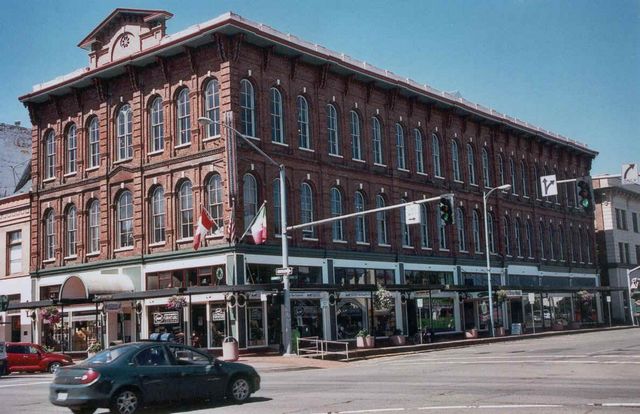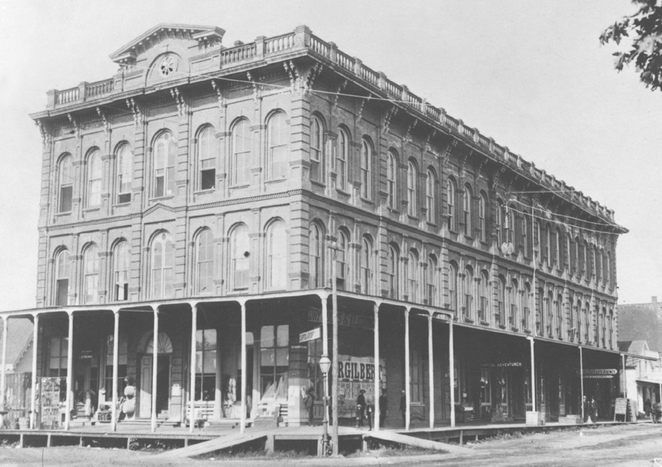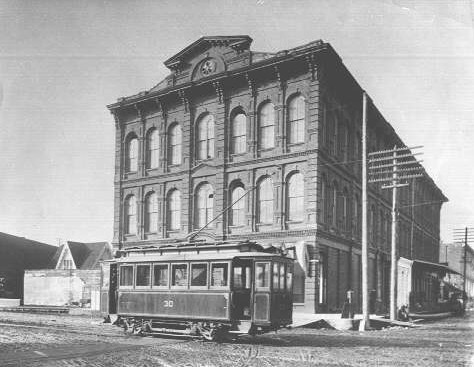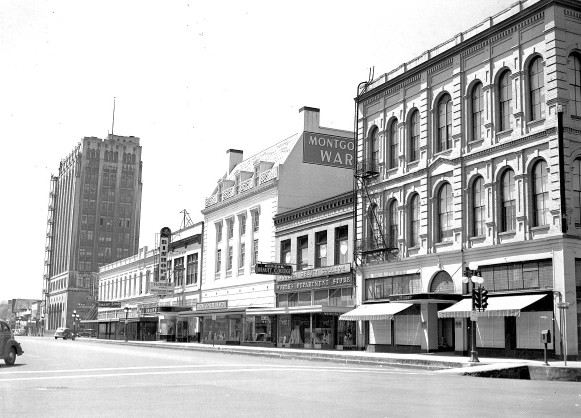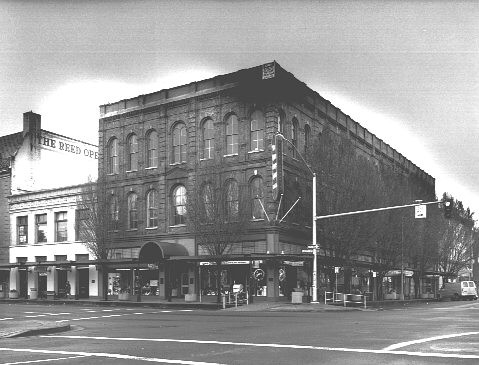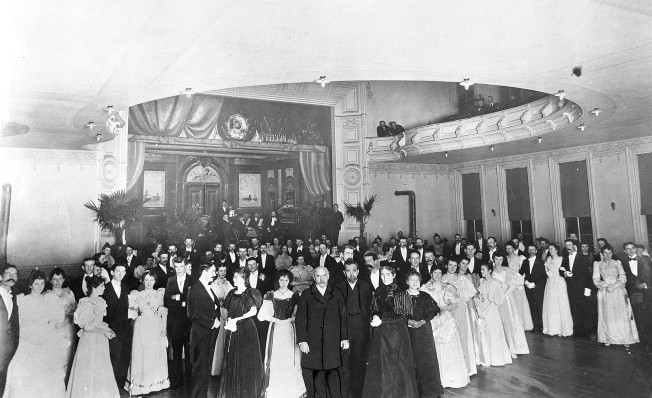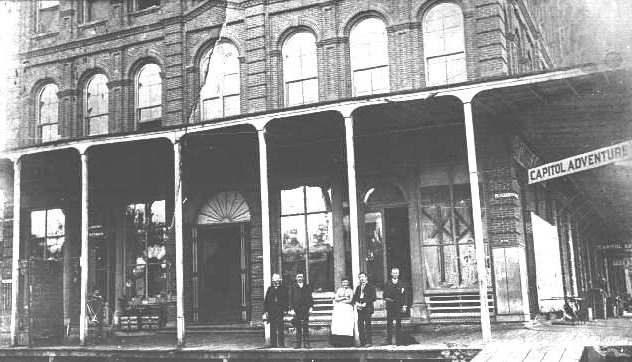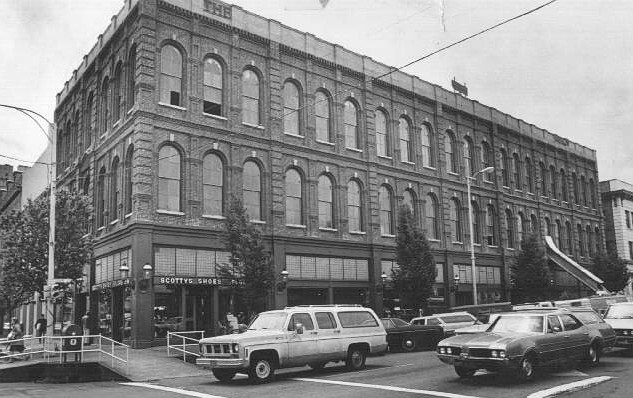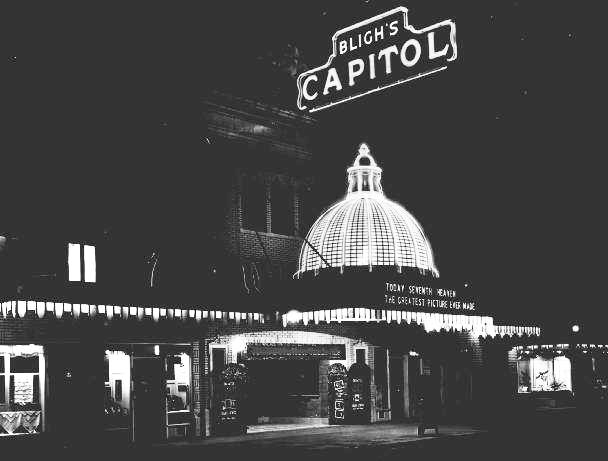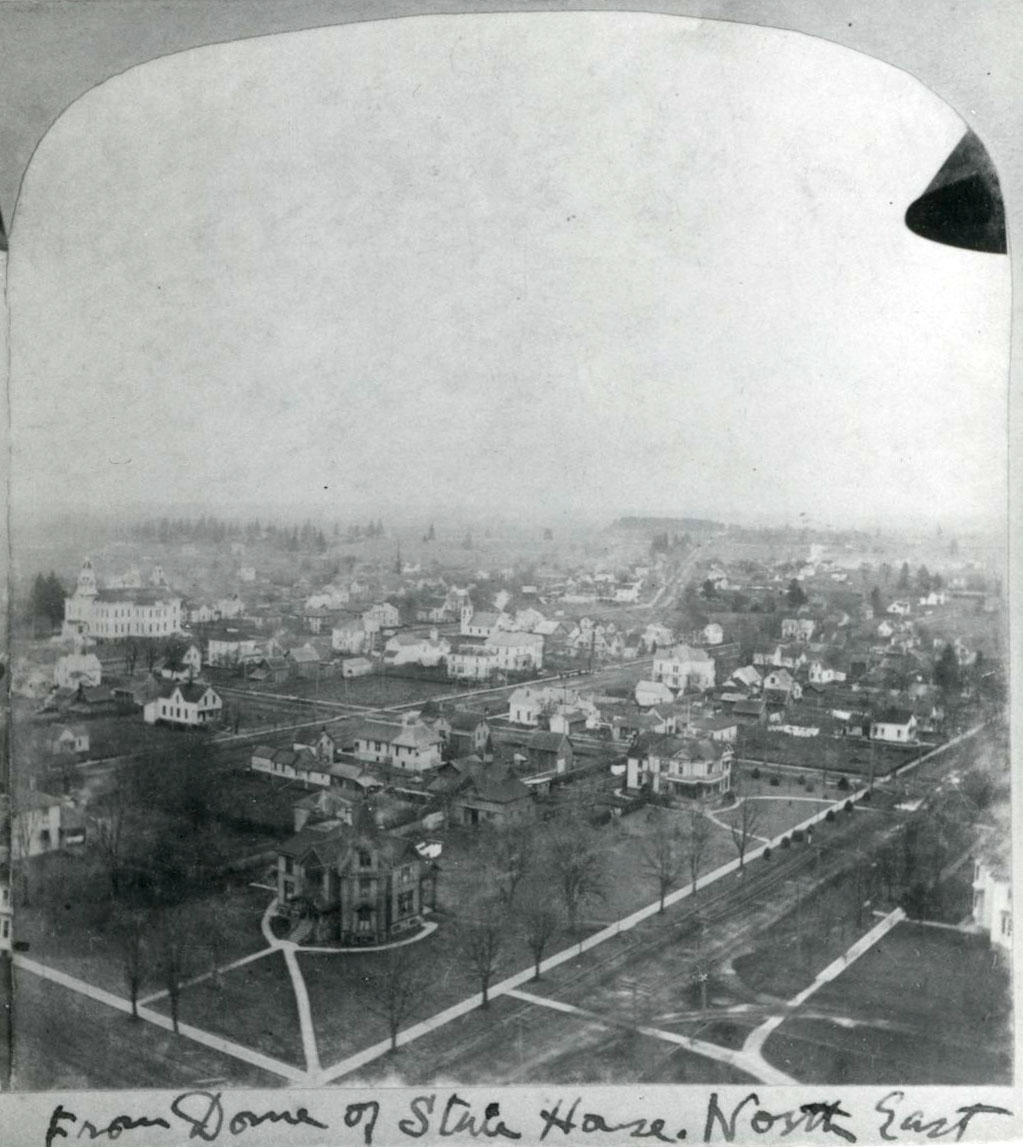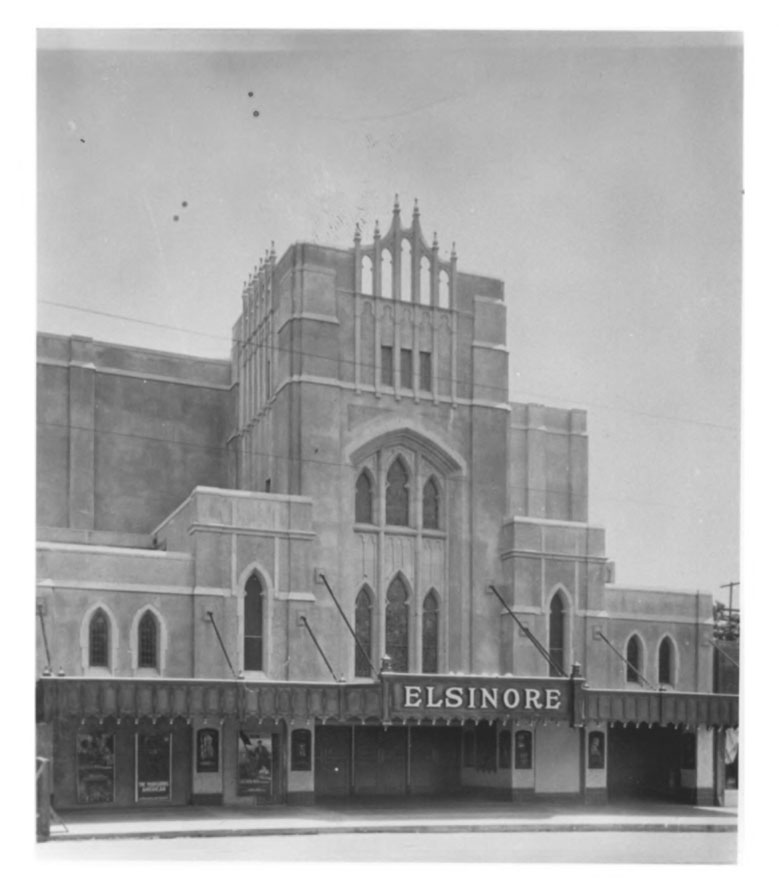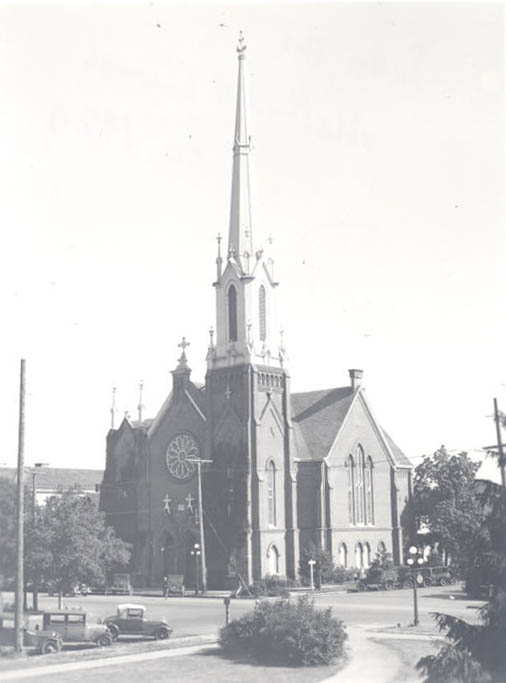The Reed Opera House is one of Salem's few remaining large structures from the nineteenth century. Built in 1869-1870 at 189 Liberty Street Northeast, its initial purpose was to house the legislature. Cyrus Adams Reed (1825-1910), Oregon’s adjutant general and member of the legislature, had to alter his vision for the building when a new administration reneged on the agreement. He had architect G.W. Rhodes design a building with retail spaces on the ground floor, a first-class hotel, and a 1,500-seat theater on the second and third floors. The structure used approximately a million bricks in its construction and cost $75,000 to build.
Reed’s Opera House, as it was originally named, opened on September 27, 1870, for the inaugural ball of Governor LaFayette Grover. The first dramatic performance, Frances Carroll, a Picture of State Life, by Eloa de Carfano, was presented two days later on a stage illuminated by gas lanterns. In a theater heated by two wood-burning stoves, overcoats and blankets were standard attire for audience members. Nevertheless, the opera house was the center of Salem’s early social life for thirty years, hosting banquets, ceremonies, traveling theatrical and minstrel shows, musicals, concerts, and fundraising events. Performers and speakers included such notables as Thomas Nast, Mark Twain, and Susan B. Anthony.
Although Reed’s Opera House attracted popular shows and large audiences, Cyrus Reed was unable to retain ownership, and he sold the building to E. P. McCornack in 1885. By 1900, the theater’s audiences were dwindling due to outdated facilities and plans for a modern, comfortable theater a block away—the Grand Theater at High and Court Streets. The building was converted into stores and offices in 1902 and was the site of the city’s first department store, Joseph Meyers and Sons. The Miller family acquired the property in 1920, and Miller’s Department Store was Salem’s dominant retail establishment until the mid 1970s. Grabenhorst-Settecase-Smith interests bought the property in 1975. In 1978, the Reed Opera House Mall was added to the National Register of Historic Places.
The arrival of Nordstrom and the Salem Center Mall in the mid 1980s took an economic toll on the Reed, and the owners turned the title back to the bank. In 1993, Englishman Ian Bourne acquired the property and reawakened interest in the historic building. He sold the Reed to Roger Yost in 2003, who invested in the structure to bring it up to code and reconnect it to its past. The elevators and the Trinity ballroom and kitchen were remodeled, and a new pediment, corona, and architectural brackets were installed on the building’s exterior. Kev Kohler, an artist from Dallas, Oregon, painted historically themed murals on the building’s elevator doors.
Reed Opera House Mall now houses locally owned shops and restaurants and offices for professional services and businesses; weddings, proms, and conferences take place in the Trinity Ballroom. After over 140 years in operation, the Reed Opera House continues to serve the people of Salem as a hub of activity and entertainment.
-
![Reed Opera House, about 2010.]()
Reed Opera House, exterior, 2000s.
Reed Opera House, about 2010. Courtesy Reed Opera House
-
![Reed Opera House, 1870.]()
Reed Opera House, exterior, 1870.
Reed Opera House, 1870. Courtesy Reed Opera House
-
![F. P. Talkington's "The Bureau" saloon in the Reed Opera House building, 1890s.]()
Reed Opera House, exterior, 1890s.
F. P. Talkington's "The Bureau" saloon in the Reed Opera House building, 1890s. Salem Public Libr., Ben Maxwell Collec., 1032
-
![Reed Opera House, 1893.]()
Reed Opera House, exterior, 1893.
Reed Opera House, 1893. Courtesy Marion County Hist. Soc., MJON0224
-
![Miller Mercantile in former Reed Opera House (right), 1939.]()
Reed Opera House, exterior, 1939.
Miller Mercantile in former Reed Opera House (right), 1939. Photo Ben Maxwell, courtesy Salem Public Libr., 1420
-
![Reed Opera House & McCormack Block Addition, 1992.]()
Reed Opera House, exterior, 1992.
Reed Opera House & McCormack Block Addition, 1992. Salem Public Libr., NRHP20
-
![Inauguration ball for Governor William Paine Lord at Reed Opera House, Jan. 1895.]()
Reed Opera House, interior, 1895.
Inauguration ball for Governor William Paine Lord at Reed Opera House, Jan. 1895. Salem Public Libr., Ben Maxwell Collec., 446
-
![Reed Opera House, 1884.]()
Reed Opera House, exterior, ca 1884.
Reed Opera House, 1884. Statesman Journal photo, courtesy Salem Public Libr., SJ847
-
![Reed Opera House, 1970s-1980s.]()
Reed Opera House, exterior, ca 1970s-1980s.
Reed Opera House, 1970s-1980s. Salem Public Libr., SCH204
-
![Reed Opera House, between 1965-1978.]()
Reed Opera House, exterior, ca 1960s-1970s.
Reed Opera House, between 1965-1978. Statesman Journal photo, Salem Public Libr., SJ544
Related Entries
-
![Capitol Theater (Salem)]()
Capitol Theater (Salem)
The Capitol Theater, which opened in 1926, was one of Salem’s finest va…
-
![City of Salem]()
City of Salem
Salem, the capital of Oregon, is located at a crossroads of trade and t…
-
![Elsinore Theater]()
Elsinore Theater
Named after the sixteenth-century Danish castle in William Shakespeare’…
-
![First Methodist Church (Salem)]()
First Methodist Church (Salem)
Founded in 1841 by Jason Lee and members of the Methodist Episcopal Chu…
Map This on the Oregon History WayFinder
The Oregon History Wayfinder is an interactive map that identifies significant places, people, and events in Oregon history.
Further Reading
Maxwell, Ben. “Store Recalled as Opera House.” Capital Journal Weekend, Jan. 11 1964, p. 3.
Reed Opera House. www.reedoperahouse.com.

